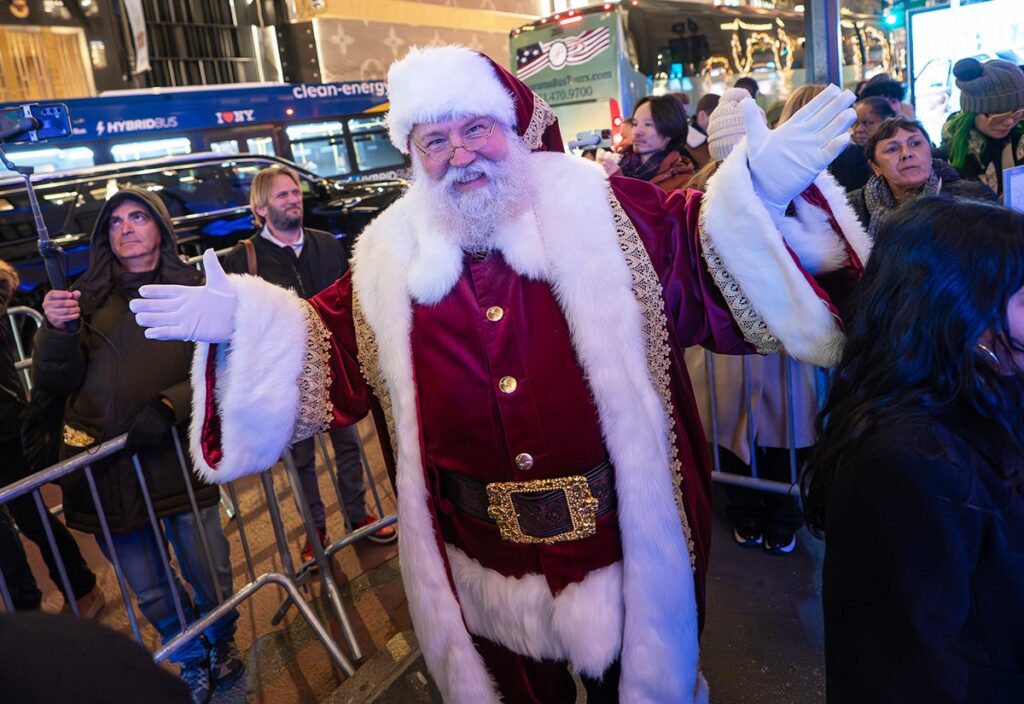You’ve got about eight months to get your holiday 2007 search campaign in shape. Are you psyched?
If not, no one could blame you. But it’s probably a good idea to examine some of the stats from the season just ended in order to optimize your online marketing performance next December.
A wrap-up report on “2006 Online Holiday Buying Trends” recently published by search marketing firm OneUpWeb took a broad historical look at sales and conversion data for the whole of the shopping season just concluded and arrived at the finding, among others, that holiday e-commerce traffic started building up a head of steam in the last week of October—even earlier than the early November start expected by many online retailers.
And to make sure that keywords, offers and ad creative are ready to take full advantage of that early start, online advertisers should plan to have their holiday marketing tactics tested and optimized for action even earlier than that: as early as the tail end of the back-to-school rush in September, according to the report’s recommendation.
“You’ve got to do everything earlier—your campaign planning and your testing need to be done well before the holiday season starts,” says Lisa Wehr, OneUpWeb founder and CEO. “My recommendation is to wait until school has started in the fall, so you don’t confuse the test results with school shoppers. But the important thing is to glean what you can out of early testing and then expect to tweak performance as the season rolls on
To compile its retrospective look, the OneUpWeb study aggregated traffic, conversion and total sales data from pay per click search ad campaigns run during the holiday season by a range of e-commerce marketers in apparel, toys, home décor, sports gear and gifts, among other categories. The campaigns ran on Google, Yahoo! and MSN and represented the online searching and buying actions of more than 1 million unique visitors. Only paid search results were measured, but Wehr says the exclusion of data from organic search does not skew the basic trends uncovered.
Daily and weekly data from the campaigns studied was sorted into three main categories: traffic, conversions rates and total sales. (Returning visitors were not included in traffic counts, and while most conversions were purchases, some retailers in the study did count catalog requests or newsletter sign-ups as conversions too.)
Using the week of Sept. 25 to Oct. 1 as a baseline point, OneUpWeb then compared activity in those three categories to that control week and calculated the increases.
The study found that site traffic began moving upward during the week of Oct. 9-15 and kept showing positive growth, with some fluctuations around Halloween and Thanksgiving, until starting to decline after Dec. 10. Conversions began to increase compared to the baseline during the week of Oct. 16-22 and kept climbing until the week of Dec. 11-17. Total sales too began growing in the week of Oct. 16-22 and kept on doing so until Dec. 11-17.
In other words, all three metrics began moving upward by the week of Oct. 16-22 and, with some blips, stayed positive until Dec. 10, when traffic started to slacken. The three categories all showed their first substantial increases over baseline activity during the last full week of October, Oct. 23-29, when traffic was up 14.2%, conversions rose 15.7% and total sales grew 9.8%
And in yet other words, if you’re a marketer thinking in terms of a Thanksgiving start to holiday buying, you’re missing about five weeks of retail ad prime time. Shoppers are showing up at Web sites during these early days, and Wehr notes that a large number of them are not just researching purchases but buying.
One aim OneUpWeb had in compiling its study was to help answer a question that seemed to gain significance during this past year-end retail scramble: What was the most important shopping day of the online season? Was there really a “Cyber Monday”, as the first Monday after Thanksgiving has been labeled in the press, or was that simply a good story—a digital equivalent of Black Friday for brick-and-mortar stores?
As it happened, the Cyber Monday effect was very real last year. The Friday after Thanksgiving was good for online merchants, as it was for their offline counterparts, with both conversion rates and total sales much more than 50% above the study’s baseline and a healthy increase of about 30% in traffic. But the Monday after the Thanksgiving holiday saw traffic up 75% over base, conversions slightly stronger than on Black Friday—and sales growth of more than 150%, more than double the rate posted on the previous Friday.
Yes, Virginia, there is a Cyber Monday.
But the really big growth numbers came later in the season. For sales, the top growth day was Wednesday Dec. 13, followed by Monday Dec. 4 and the following Monday, Dec. 11. In fact, Dec. 11-13 comprised the biggest three-day sales period in the season, OneUpWeb determined. But since sales started to decline after Dec. 13, that week was only the second strongest sales week of the season, coming behind Dec. 4-10.
It’s also notable that two of those top sales days are Mondays. Put that fact together with the reality of Cyber Monday, says Wehr, and it seems incontrovertible that there is in fact a “Monday effect” in online shopping over the holiday season.
Those Monday spikes in e-commerce sales were once attributed to shoppers preferring the office T-1 line to their home dial-up connections. But with so many homes now equipped with high-speed access (especially among the digerati who are more likely to be shopping online), Wehr thinks it more likely that shoppers are choosing to spend non-working hours either with their families or shopping in offline stores, then going online on Monday to buy what they saw (or couldn’t find) over the weekend. Friday paydays may also contribute to the importance of online Mondays during the holiday rush.
Why did the biggest jumps in traffic, sales and conversions occur on Wednesday Dec. 13? “Basically, we just don’t know,” Wehr says. “That’s when the online promotion seemed to move into full swing, and perhaps people just felt a greater sense of urgency about getting their shopping finished. Two weeks prior to Christmas, I know I feel a little bit of panic if I’ve still got things to order and pray they get to me on time.”
While intuition says that online holiday sales drop off as retailers approach their Christmas shipping deadlines, the week of Dec. 18-24 still posted traffic, conversion and sales growth rates that were higher than the base, although lower than those of the preceding week. And conversion rates declined much more slowly than the other two metrics, staying above 50% growth almost until Christmas Eve.
“That relatively high conversion rate was a surprising finding to us,” Wehr says. “It may indicate that people had already been to those sites and knew what they were looking for.”
That fact relates to an interesting finding in the OneUpWeb study. Traffic growth was minimal on Thanksgiving Day and actually fell to negative growth on Christmas Eve and Christmas Day, as did total sales. But conversion rates on all those days were still significantly higher than during the baseline week. So while there may have been many fewer people visiting e-commerce sites on those days, those who did show up were still motivated enough to take some action.
The lesson there, according to OneUpWeb, is that late-season traffic may be had to get, but it’s more much likely to lead to a purchase—perhaps out of desperation, as shoppers scurry to complete their gift lists. Both sales and conversion rates remained positive during the week after the holiday, Dec. 25-31. (It’s worth noting that the OneUpWeb report counted gift card sales when they were purchased, rather than at redemption as many offline retail studies do, so last-minute or post-holiday gift card sales may account for some of this business.)
As for what lessons to be learned from this look back at the online holiday 2006, Wehr says best practice dictates that marketers be ready to start breaking holiday campaigns by Halloween 2007. As specified above, that means getting testing done and evaluated about a month before.
Another important finding is that marketers can use certain milestones to predict peak volumes and thus estimate the amount they should be budgeting for their holiday PPC campaigns. Whatever traffic volume they see on their Web site during Halloween week, e-commerce operators should plan for four times that volume during the peak holiday weeks of Nov. 20 through Dec. 17. They should also prepare to handle twice the volume during those weeks that they see during the two weeks prior to Thanksgiving.
In terms of search strategies, higher holiday conversion rates may give retailers the room they need to operate with keywords that have suddenly grown more expensive, Wehr says.
“You’re not going to avoid higher costs, so you need to be constantly watching to find those keywords that are converting at rates that let you pay more,” she says. “If you’re paying attention to acquisition costs, you can know whether you can afford to bid on a keyword or whether you should take a break and then revisit it later. Even some words that don’t convert well in themselves may lead to added sales on the site, so merchants may be able to justify buying them as loss leaders.”
And as the holiday progresses and inventories are depleted, merchants should use their PPC campaigns to take the best advantage of available stock. That may mean running ads on brand or product keywords that redirect shoppers to alternative purchase choices.
“If you’re out of inventory on the Sony PlayStation 3, you may want to continue running that keyword because you’re got Nintendo 64s to sell,” Wehr says. “That’s a strategy that can work in certain cases. If I were a reseller of the Nintendo Wii console and knew that nobody had any stock, I’d be bidding on the term and then using a landing page that said, ‘Look, you’re not going to get this product until way after the holiday, so why not try this alternative?’”
Online retailers can put this historical data to work next holiday season, OneUpWeb concludes, by testing their holiday ad creative as early as the back-to-school season, in order to have holiday promotions and offers optimized and ready by Halloween. They can also plan to offset sales declines in the week before Christmas by promoting gift cards.
As for predicting next season’s holiday volume increases, OneUpWeb recommends two rules of thumb. Whatever volume a site gets during Halloween week, retailers should plan to handle four times that much traffic during the holiday peak periods. They should also prepare to handle twice the traffic they get during the two weeks prior to Thanksgiving.



